Here in the Pacific Northwest, we live in a rich and varied ecosystem. Our temperate rain forests are host to a wide variety of plants, many of which the Native people learned how to use for food, medicine, technology, craft, ceremony, and more.
The forests in our bio-region are dominated by Sitka Spruce, Western Hemlock, Western Red Cedar, and Douglas Fir. These beautiful trees have many gifts to offer, and some are even edible. Subspecies of the Pine family (Pinaceae) have edible needles, which are very high in Vitamins C and A. I think it’s kind of funny that packets of vitamin C are so popular, when most of us can walk out the door and harvest pine family needles in our own backyards. Just sucking on a few Pine needles can give us the recommended daily amount of vitamin C! 
We can harvest the young, green needles from a pine family tree for the best flavor and texture. The older needles taste slightly more bitter and are very tough. Suck or gently nibble on the young needles for a nice citrus-y flavor. You can chew on the needles, but that will release a strong, almost astringent taste.
Both the young and old needles make a nice, subtle-tasting tea, with varying levels of intensity. Pine tea is very high in vitamins, and it’s said that the tea is also beneficial for skin, hair, and eye health. And you won’t get scurvy!
Ingredients:
- 1 tbsp (or less) needles from a pine family tree
- 8 oz water
* Precaution * : It is vital to be able to correctly identify the plant from which you are harvesting. Here at Wolf Camp, we teach that if you are not 100% sure that you can identify the plant, don’t harvest it! In our region, we do have a poisonous look-a-like tree called the Pacific Yew.
* Precaution * : Ponderosa Pine (Pinus ponderosa) and Lodgepole/Shore Pine (Pinus contorta) trees, among others, both contain a chemical compound called Isocupressic acid. This compound (in large amounts) is known to cause abortion in cattle, and should be avoided by pregnant women.
It is a great idea to invest in a field guide and familiarize yourself with the plants in our region. At the bottom of this article, I’ve included some helpful resources.
Directions: Hot Infusion Method
Harvest the pine family needles. As always, gather in an area that is free from pollutants or chemical contaminants. Be sure to only take what you need, and collect from different areas so that new growth isn’t totally wiped out in one area.
After harvesting the needles, strip them from the branch and remove the brown sheaths that may still be on the base of the needles.
In a pot or electric kettle, boil your water.
Place the needles in a teapot or jar, add boiling water and let steep (covered) for about 5-10 minutes.
Once steeped, pour the needle/water mixture through a strainer into a clean jar or cup and enjoy.
Directions: Cold Infusion Method
To make a cold infusion, simply place the needles in a jar and cover with cold water and a lid. Let them steep for 8-12 hours or overnight, then separate out the needles from the water.
If you are saving the Pine tea for later, don’t forget to label with the name, date, and the type of tree that you harvested from.
Enjoy!
Be sure to check out these helpful & recommended resources:
- Plants of the Pacific Northwest (Field Guide) – Top recommended book!
- Common Trees of the Pacific Northwest
- Botany in a Day
- Medicinal Plants of the Pacific West
- Trees & Shrubs of the Pacific Northwest
Learn how to confidently identify plants using their unique family patterns in this in-depth video by author of Botany in a Day, Thomas Elpel!
*** For educational purposes only. This information has not been evaluated by the Food and Drug Administration. This information is not intended to diagnose, treat, cure or prevent any disease. We recommend that you consult with a qualified health care practitioner before using herbal products, particularly if you are pregnant, nursing or on any medications. ***
*** Please read our Honorable Harvesting Guidelines before harvesting any plant material. The final guideline is of utmost importance: “Never put anything in your mouth unless you are 100% sure it is safe to ingest.” ***
 Hannah began her apprenticeship at Wolf Camp in 2013 and graduated as a lead herbal instructor in 2014. Join Hannah and other Wolf College wild chefs during our annual Wild Cooking & Ethnobotany Expedition: The Herbal Foray the second week of July on Lake Sammamish near Seattle.
Hannah began her apprenticeship at Wolf Camp in 2013 and graduated as a lead herbal instructor in 2014. Join Hannah and other Wolf College wild chefs during our annual Wild Cooking & Ethnobotany Expedition: The Herbal Foray the second week of July on Lake Sammamish near Seattle.
Hannah graduated from the University of Oregon in 2014 with a Bachelor’s Degree in Foreign Languages. She has her own blog, where she writes about her love for crafts, animals, plants, cooking, and the outdoors: rainmountaincrafts.com





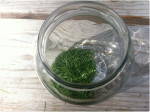

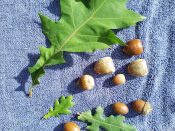

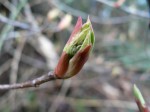

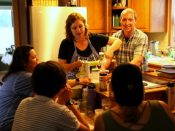
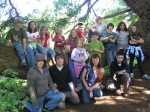
Comment on “How to Make Pine Needle Tea”